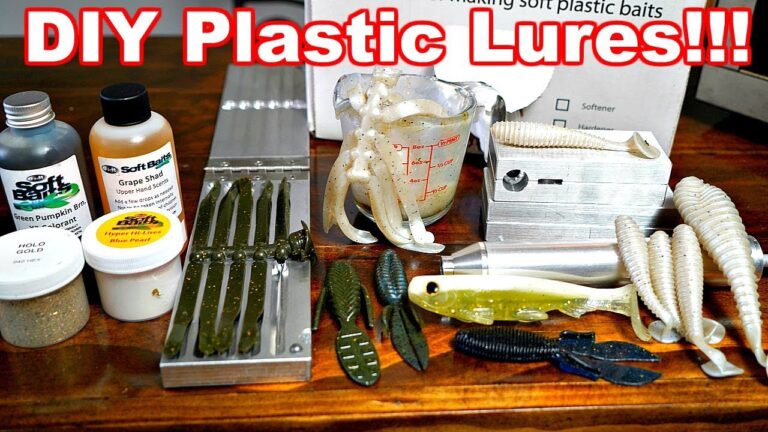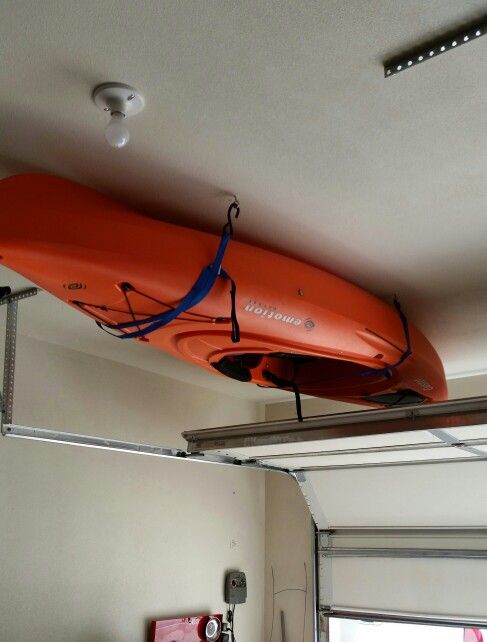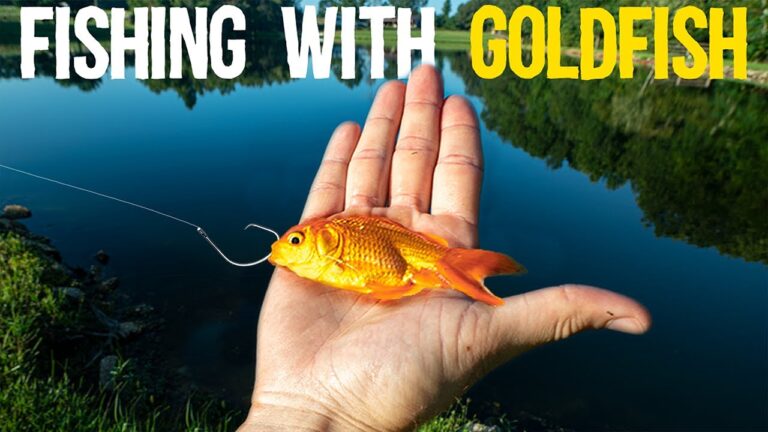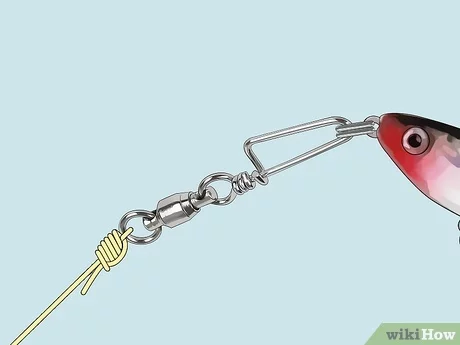How to Work a Jig

To work a jig, cast it out and allow it to sink to the bottom. Then, quickly snap or pop your wrist and rod tip up to create a jerky motion, before letting the jig drop back down.
You can vary the jigging motion by jigging up and down, side to side, or a combination of both. This technique is effective for attracting fish and can be used in both saltwater and freshwater environments. Jigging is a popular fishing technique that involves using a type of lure called a jig to attract fish.
It is a versatile method that can be used in various fishing conditions and is favored by both beginners and experienced anglers. The key to working a jig effectively lies in the jerky, vertical motion created by the angler. By mastering this technique, you can entice fish to strike and increase your chances of a successful catch. We will explore the step-by-step process of working a jig, including the proper casting technique and different ways to create varied jigging motions. Whether you’re a novice or a seasoned angler, learning how to work a jig can greatly enhance your fishing skills and improve your chances of landing a big catch.
Introduction To Jig Fishing
Whether you are a beginner or an experienced angler, understanding what a jig is and how to fish a jig are essential for successful fishing. Working a jig involves different techniques such as flipping, swimming, or casting, each requiring specific equipment and skills. Learning the proper use of your gear is crucial when working a jig to entice fish and get them to strike. Different scenarios may require varying jigging techniques, such as targeting specific areas like rocks, brush, or docks. It’s important to know the appropriate jigging methods for each situation, ensuring a higher chance of catching the desired fish species. By mastering the art of jig fishing, you can enhance your fishing experience and improve your chances of a successful catch.

Credit: www.in-fisherman.com
Jig Fishing Basics
Jig fishing is a popular technique for catching fish, especially bass. To effectively work a jig, it’s important to have the right gear and equipment. When choosing the right jig, consider the weight, color, and design that will attract your target fish. Additionally, using jig trailers can enhance the presentation of your bait and increase your chances of a bite. Jig trailers come in various styles, including soft plastics and skirts, which can mimic different types of prey and entice fish to strike. Experimenting with different colors and styles of jig trailers can help you determine what works best in different fishing conditions. Overall, understanding the importance of gear and equipment selection, as well as using the right jig trailers, is essential for success in jig fishing.
Working A Jig For Different Species
Jig Fishing for Bass: When it comes to jig fishing for bass, there are a few key tips to keep in mind. First, cast your jig out and let it sink to the bottom. Then, use short, quick snaps of your wrist and rod tip to make the jig move enticingly. You can jig it up and down, side to side, or a combination of both. Lastly, always be ready for a strike and set the hook when you feel a bite.
Jig Fishing for Crappie: Jig fishing for crappie is similar to fishing for bass. The key is to use smaller jigs and adjust your techniques accordingly. Crappie tend to suspend in the water column, so experiment with different depths and retrieve speeds to find what works best. Jigging near brush piles or other structures can also be productive when targeting crappie.
Jig Fishing for Trout: Trout can be caught using jigs as well. For trout fishing, opt for smaller jigs in natural colors. Cast your jig upstream and let it drift with the current, using subtle twitches and pauses to imitate the movement of a baitfish. Trout are often found in deeper pools or near structure, so focus your efforts in those areas.

Credit: diy.dunnlumber.com
Advanced Jig Fishing Techniques
When working a jig, it’s important to focus on advanced techniques such as flipping and pitching. These techniques allow for precise and targeted presentations, increasing the chances of landing a catch. Additionally, mastering swim jig techniques can be highly effective.
Football jig tips are also valuable as they can help in covering a large area and imitating natural prey movements, making it an enticing choice for bass. By incorporating these techniques, anglers can enhance their jig fishing success.
Common Mistakes To Avoid
Common Mistakes to Avoid:
One common mistake when it comes to working a jig is not paying attention to detail. It’s important to carefully inspect the jig and make sure it’s rigged correctly, with the hook positioned in the right place.
Another mistake is using the wrong retrieve. Different fishing situations call for different retrieves, so it’s important to adapt your technique accordingly. Experiment with different retrieves, such as a slow and steady retrieve or a more aggressive jigging motion, depending on the behavior of the fish.
Lastly, incorrect jig presentation can also hinder your success. Make sure to present your jig in a natural and realistic manner, mimicking the movement of baitfish. This can be achieved by varying the speed and depth of your jig, as well as incorporating pauses and jerks into your retrieve.
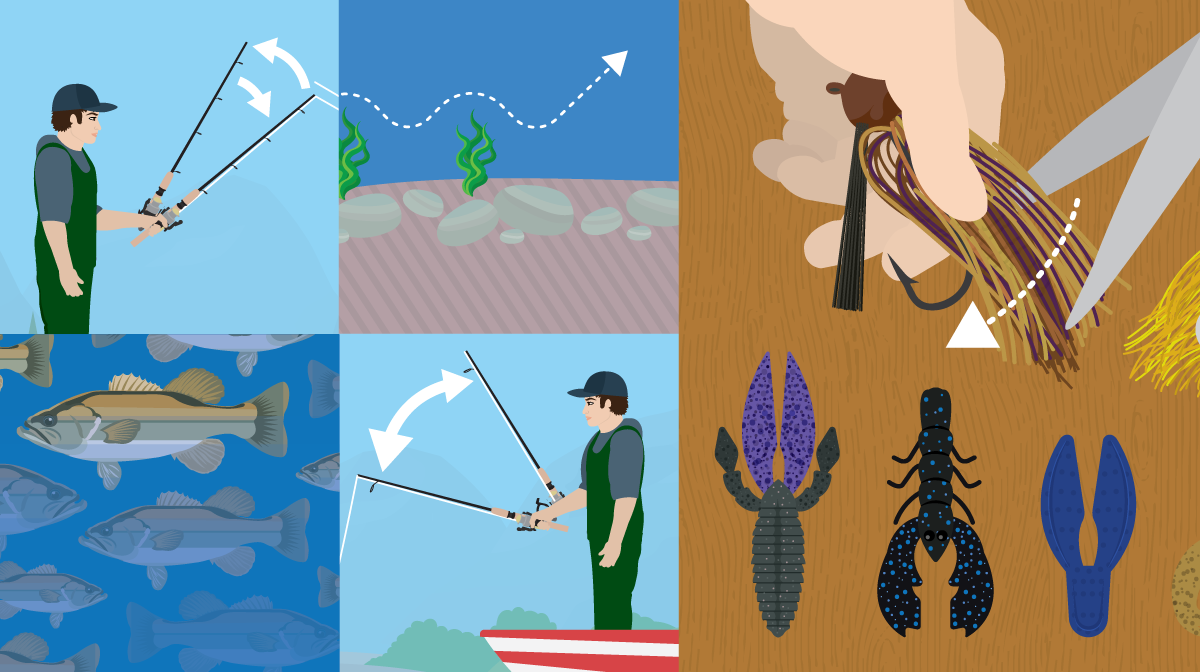
Credit: www.fix.com
Frequently Asked Questions On How To Work A Jig
How Do You Jig For Beginners?
To jig for beginners, cast your jig hook and let it sink to the bottom. Snap your wrist and rod tip upwards and then let the lure drop back down. You can jig up and down or side to side for different movements.
Jigs create a jerky motion to attract fish, and they work in both saltwater and freshwater.
How Should You Fish A Jig?
To fish a jig, cast it out and let it sink to the bottom. Then snap or pop your wrist and rod tip up quickly and let it drop back down. You can jig up and down, side to side, or both.
This jerky motion attracts fish in both salt and fresh water.
How Do Fishing Jigs Work?
Fishing jigs work by creating a jerky, vertical motion to attract fish. They are versatile and can be used in both saltwater and freshwater. Unlike swimbaits, spoons, or spinnerbaits, which move more horizontally, jigs move in a jumping motion. You can jig up and down, side to side, or both.
How Do You Hit A Jig?
To hit a jig, follow these steps: 1. Cast your jig and let it sink to the bottom. 2. Snap or pop your wrist and rod tip up quickly, then let the lure drop back down. 3. Repeat this technique, jigging up and down, side to side, or in a combination.
4. The jerky motion of the jig attracts fish. 5. This method works in both saltwater and freshwater.
Conclusion
If you want to improve your fishing game, mastering the art of the jig is essential. With different types of jigs and techniques, you can target various fish species. Whether it’s a swim jig, football jig, or finesse jig, understanding how to work them can enhance your fishing experience and help you catch more fish.
So get out there, practice your jigging skills, and enjoy the thrill of reeling in those big catches!
